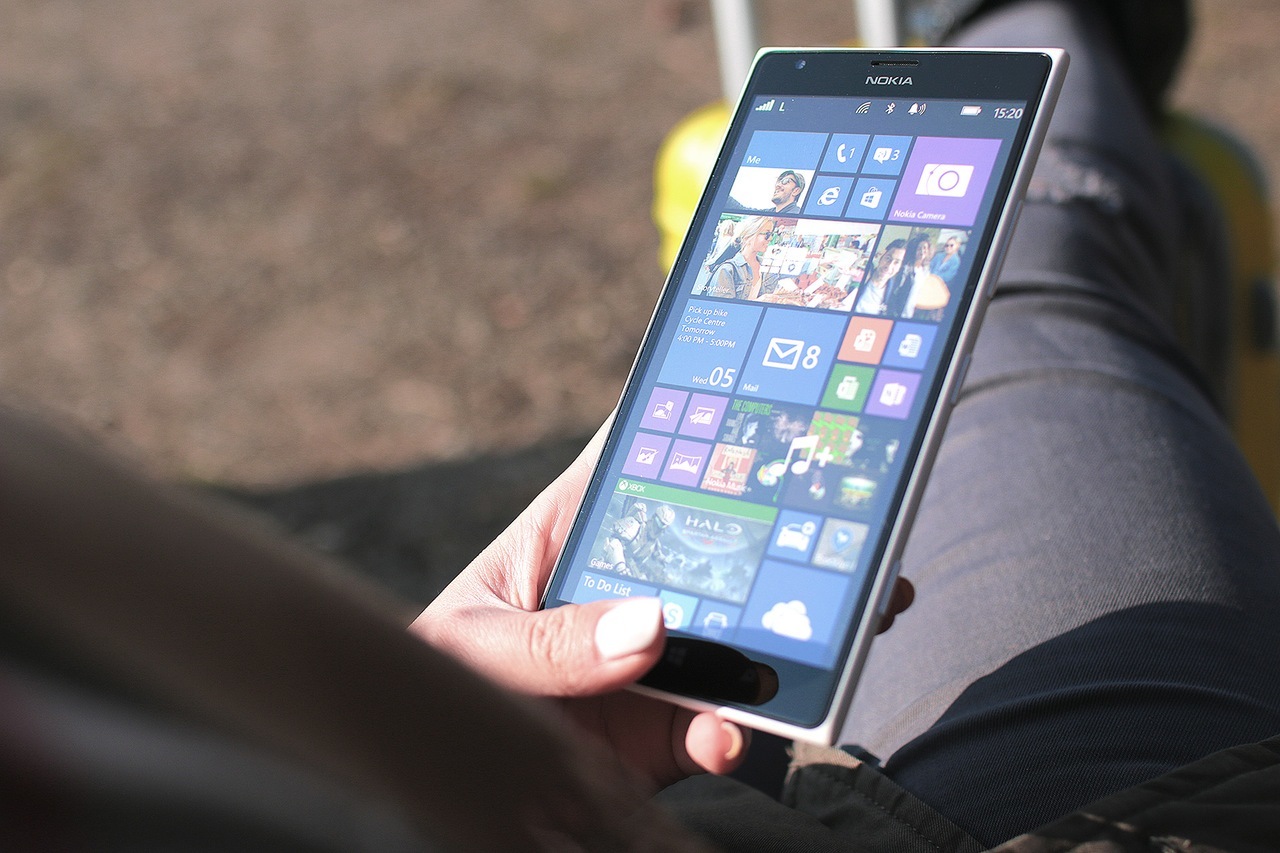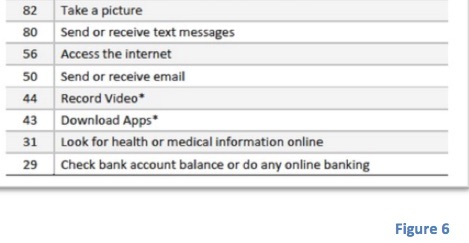- The use of mobile devices has changed consumer behaviour extensively with significant consequences to our societies and culture. On balance, are these effects positive or negative?
- The current research aims to investigate the overall effects of the integration of mobile devices in the current society.
- The introduction of mobile marketing was described as the main change generated from the introduction of the mobile phone technology, with particular attention to the marketing strategies that it involves: location based services, SMS advertising, social media marketing and mobile shopping.
- Finally, the positive and negative effects on society were critically analysed and evaluated.
The penetration of the mobile phone in the current society can be defined as one of the main technological revolution of the century. in 1997, when it was just at the beginning, 215 million people owned already a mobile phone, increasing to 1.16 billion in 2003 (Bauer et al., 2003), to reach more than 3.6 billion nowadays (Kemp, 2015). Currently, as illustrated from figure 1, the number of mobile users represent more than half of the world population. Considering the fact that a significant number of people owns more than one mobile phone, the number increases extensively, covering roughly 99% of the total population (figure 2).
FIGURE 1
FIGURE 2
Moreover, the innovation of the mobile phones itself represents another important trend of the current society. The introduction of the Web 2.0 and the possibility to access the web from the mobile phones, represents the main shift in the usage of this devices, which is not longer considered as a channel to communicate via calls or SMS, but instead it represents a new platform to access the internet to share and look for news and information (Berthon et al., 2012). Figure3 illustrates the significant increase in mobile phone activities from 2009 to 2013. As it can be noticed, almost all the activities have grown at an exponential rate during a five years period (Duggan, 2013).
Several researches tried to explain the consumer acceptance and massive implementation of this new technology. Starting from Ajzen and Fishbein’s theory of reasoned actions (1980) and theory of planned behaviour (1975), which explain how consumer behaviour is influenced by social norms, attitudes, personal subconscious and external factors (Ajzen and Fishbein, 2000), different model were built to apply this framework to the acceptance of the mobile technology innovation.
Thus, according to Bauer et al. (2005), the technology acceptance model focuses on the perceived ease of use and usefulness of the new product/service as the main driver of acceptance; On the other hand, the uses and gratification theory states that rational or utilitarian reasons are considered the main factors of adoption of a new technology. Overall, information and entertainment are considered to be the main fain factors of acceptance (Sultan et al., 2009)
As claimed from Srivastava (2005), who runs an individual voluntary arrangement company, no technological innovation can happen without a change in society. Indeed, the mobile phone represents a “social object” which has a significant impact on the consumer behaviour. Mobile phones have a direct impact on all the stages of the consumer decision process, as showed in figure 4, acting as a moderator of economic and social factors and decreasing the impact of the five competitive forces (Porter, 1979) on the product of interest (Shankar and Balasubramanian, 2009).
FIG. 4
MOBILE MARKETING
In the current liquid society (Bauman, 2005), the increased use of social media and internet contributes significantly to the constant transformation of community norms and people lifestyles; mobile technology, play an important role in facilitating this process, enabling the immediate search and share of information (Tussyadiah, 2012). Specifically, from a marketing perspective, the main implication of these changes is the implementation of the “mobile marketing”, defined from Kaplan (2012) as “any marketing activity conducted through a ubiquitous network to which consumers are constantly connected using a personal mobile device”.
The mobile marketing revolution started on June 2007 with the launch of the first I-phone, which generated immediately the creation of a new market in order to satisfy the demand of the future “creative consumers” (Kaplan,2012; Berthon et al,.2012). In fact, the main target of the mobile marketing are individuals that have constant access to the web via a personal mobile devices and that have the possibility of combine different networks to connect to the internet and switch immediately among them (e.g. wireless at home and 3G outdoors).
The main example of mobile device that meet all of these requirements is the mobile phone; the embodied characteristics of the mobile phone, such as the high personalisation, the portability and the real personal connection with the owner, enable the effective use of several mobile marketing strategies, including: location based services, SMS advertising, social media marketing and mobile shopping (Shankara and Balasubramanian, 2009).
LOCATION BASED SERVICES
The famous quote “Location, location, location” typical of the operation management field, has now reached the application also in the mobile marketing area. The high level of geo-location technology that characterise the mobile phones generated the basis for location-based services (LBS) which are gaining increased importance (IAB, 2014). These services, in turn, created the opportunity for location-based marketing (LBM) and specifically, location-based social network (LSN).
LBM is defined as hyper personal marketing (Dow, 2013), since it enable to contextualise promotions and advertising for the singular consumer, according to his/her location at a specific time. Moreover the information change simultaneously to the customer’s necessities. (Tussyadiah,2012)
Foursquare is probably one of the best example of LBM; the app, created in 2009, with the initial purpose of sharing the position in a particular place by “checking in” has now became a on-line recommendation service. The use of this LBM encourages the “variety and the loyalty behaviour”, stimulating the visit of new places and increasing the customer loyalty of a specific venue (Tussyadiah,2012).
Walmart used LBS to target customers that were travelling nearby the five stores in the Toronto area. Their strategy focused on specific time and the weather of the day to target their consumer with specific promotions, as illustrated in figure 5. The strategy generated high engagement from the customers and increased the sales of swimwear. (IAB, 2014)
SMS ADVERTISING
According to Portioresearch (2015), within the mobile marketing, messaging is the most profitable advertising tool. It represent another form of high-individualised marketing ( Zhang & Mao, 2008) since the company usually send messages directly to the customer (Barnes, 2002).The significant success of this technique can be explain by two main factors:
Firstly, according to the theory of planned behaviour (Ajzen and Fishbein’s , 1975) the social positive evaluation of the SMS, due to the high knowledge of this practice, generates consequently a positive attitude also toward the SMS advertising. As illustrate in figure 6, sending and receiving texts accounts in fact for 80% of the whole mobile phone usage (Amin, 2012).
Secondly, a sms marketing platform allows you to send a personalised message with very specific and clear content. Moreover, messages are considered less intrusive than phone calls and give more flexibility to the customers in terms of response time (Scharl, 2005).
Silverstone used a very simple SMS marketing campaign to promote the Formula 1 British Grand Prix, which generated the increase in the ROI of 680%. They selected 45000 users from a database of the Gran Prix fans and sent them a simple SMS. Following the link contained in the message, they could directly purchase the ticket from the events page, as shown in figure 7.
MOBILE SHOPPING
Similarly, Ford used another type of SMS advertising campaign, to provide the customers with additional information about their products. Also in this case, although not at the same level of Silverstone, the campaign was successful, but many users considered it slightly intrusive, due to the repetitively of the SMS (Figure 8).
Mobile shopping represents another strategy that allows consumers to have access to a personalised service from their mobile phones. More than 60% of users purchased a product/service from their mobile phone or used it inside of the store, to look for additional information about the products (Miller, 2014). As illustrated from figure 9, the main activities with the mobile phone in store include the comparison with other products, research of product reviews and using the scanning code to gathered additional information (Duggan, 2013).
The convenience in terms of time and price was found to be the main motivator of mobile shopping. The use of devices in store, on the other hand, allows to reduce the perceived risks associated with the purchasing process (Yang et al., 2015). This trend is supported by the creation of mobile wallets in order to further reduce the time of purchase, enabling to compare products, reed reviews and buy directly from the mobile phone (Miller, 2014).
Amazon has designed an extremely powerful strategy to combine all the advantages related to the mobile shopping. As shown in figure 10, from the mobile phone, it is possible to search the item and compare the other products through a barcode scanner. The automatic data entry for the payment reduces the risk of typing mistakes. Moreover, there is the possibility of synchronise the shopping basket with different devices.
The Amazon model inspired many other companies, such as Tesco, which in 2010 launched its first mobile shopping app and increased its profit immediately.
MOBILE SOCIAL MEDIA MARKETING
Considering the sense of identity associated with the mobile phone (Srivastava, 2005) and the significant exposure of social media (Kietzmann, 2011), the integration of this two elements in the mobile social media marketing represents another fundamental change in the way companies interact with their customers (Kaplan, 2012).
According to the concept of self-presentation and self-disclosure (Goffman, 1959; Schau &Gilly, 2003), the reason why people share certain information and experiences on social media are determined by the way they want to be judged by other people. Moreover, according to the impulsiveness theory (Ainslie,1975), sharing a status, a picture, or a link can be interpreted also as an impulsive action, adopting the same patterns of the motivational conflicts, typical of the impulse buying behaviour (Rook, 1987). On the other hand, the tendency of other users to be interested in the information shared, can be explained by the concept of ambient awareness created from the regular interaction with social media (Kaplan, 2012; Kietzmann, 2011).
Social media campaign are common methods to promote the product and to engage with the consumers;
For instance, Oreo, the famous biscuit, to engage with the consumers and promote its brand, shares daily a picture on facebook, where the image of the famous biscuits is associated with particular events or news of that day, as shown in fig 11. With this marketing campaign, the company facebook page added more that 5 millions like, increasing the engagement of 110%.
Mercedes, used Twitter to publish a short video, asking the followers to choose the final with a tweet, illustrated in figure 12. The most voted final were showed the following week on the programme X-factor. This strategy represented one of the first successful combination of social media and TV advertising.
IMPLICATIONS AND EFFECTS
Considering the large amount of big data generated (Boyd and Crawford, 2011) the combination of the four strategies can improve massively the marketing research techniques and the targeting of specific customers (Kaplan, 2012).
Promotions, communications and engagement are significantly facilitated from the global coverage of internet which allows to reach people “anytime, anywhere, anymedia” (Atzori et al., 2010). The Walmart example and the Foursquare study, demonstrate how LBS can improve the company reputation and increase sales. Similarly, the results of Oreo and Mercedes social media marketing campaigns, showed the power of social media to engage with customers.
The personal use of mobile phone, improves this opportunity even further, allowing the direct interaction between the company and the customers, in a simple but profitable way, as shown from the SIlverstone example of the SMS advertising.
Moreover, mobile shopping improve the overall customer experience, facilitating and supporting the purchase decision process (Yang et al., 2015). Additionally, as illustrated from the Amazon case study, they represent a convenient, flexible and fast way of shopping.
Overall, the mobile marketing strategies seem to affect positively the company through increase in profits and high engagement with customers. It appears as a win-win situation where the businesses generates a better service and enhanced experience, improving the customer and loyalty satisfaction, and consequently their profit.
However, from a wider perspective, the negative effects of the mobile marketing strategies can be noticed.
Firstly, the privacy violation represents one the main concerns of the users of mobile phones (Yang, 2015); it is often out of the consumer’s control and is considered as a negative factor (Ligaya, 2014). Especially in the SMS advertising, as shown from the Ford case study, adopting a push approach it can be repetitive and can be perceived intrusive from the customers.
Moreover, with the growth of on-line purchase, the risk of digital fraud has significantly increased, as well as the automatic authorisation of personal information, due to the consumer inattention and cognitive laziness. In this way, sometimes the role of permission is manipulated from marketers to make consumers unconsciously consent to the re-use of their data (Amin, 2011). Indeed, according to Yang (2015), the lack of trust represents the second main limitation of mobile shopping. Ess, (2002) claims the importance of the ethical issues involved in this scenario, stating the difference between the accessibility of the data and the morality of using those information (Boyd and Crawford, 2011).
Additionally, the mobile marketing strategies work more efficiently when combined with some other type of advertising or media rather than used singularly (Amin, 2011; Tussyadiah, 2012).
Although Andzulis (2012) noticed that mobile marketing can directly increase sales, in the case of social media marketing there are some concerns. In fact social media were found to be effective in building relationships, however only 9% of businesses reported a direct connection between social media strategies and increase in profits (Agnihotri, 2012).
Finally, perhaps the most significant effect of mobile marketing is the social implications linked to this technological innovation. Mobile phones are defined as a double-faced technology, since despite the positive effects that they generated in terms of consumer purchasing decisions, there are several drawbacks linked to the social aspect of the individuals (Baron, 2010).
Andzulis (2012) claimed that the mobile phones improved the opportunity of communication, however it could be argued that in reality, they changed the patterns of interaction with family and friendships relationships, especially among young people.
A study conducted on teen-agers showed that the constant interaction with the mobile phone resulted to be both a positive and a negative factors, with most of the respondents claiming that they felt better without their mobile phone. Moreover, significant risks of mental, emotional and social problems were found to result from the constant use of thee devices (Baron, 2010).
However, despite the fact that people are conscious of the several negative effects, the actual use and purchase of mobile phones is continually increasing as a demonstration of the actual shift of the patterns of social acceptability from the traditional “face-to-face” towards the technological communication (Baron, 2010).
LIMITATIONS
The current research addresses the social mobile phone integration in a broad and general way, without considering the cultural differences that characterise the phenomenon. It should be acknowledged, in fact, that behaviours and interaction with other people and with the technology, vary according to the social and cultural context (Triandis, 1989).
Considering the overall social context and the businesses’ and consumers’ perspectives, the overall effect on the social and cultural environment results to be negative.
Although the mobile phone integration was found to generate effective revenues for the companies and simultaneously create a better experience for the consumers, the human implications connected with this phenomenon, were found to be deteriorating for the social interaction among people.
It has to be considered, however, that the causes of this negative effect are not exclusively attributable to this technological innovation, but rather to the larger and constant transformation of the current society (Bauman, 2005).
_ _ _
REFERENCES
Agnihotri, R., Kothandaraman, P., Kashyap, R. and Singh, R., 2012. Bringing “Social” into Sales: The Impact of Salespeople’s Social Media Use on Service Behaviors and Value Creation. Journal of Personal Selling and Sales Management, 32(3), pp.333-348.
Ainslie, G., 1975. Specious reward: A behavioral theory of impulsiveness and impulse control. Psychological Bulletin, 82(4), pp.463-496.
Ajzen, I. and Fishbein, M., 2000. Attitudes and the Attitude-Behavior Relation: Reasoned and Automatic Processes. European Review of Social Psychology, 11(1), pp.1-33.
Amin, P., Zaveri, B. and Patel, A., 2011. Sms Marketing: The Role Of Permission And Acceptance. Mobile  Marketing  Association, 6(2).
Andzulis, J., Panagopoulos, N. and Rapp, A., 2012. A Review of Social Media and Implications for the Sales Process. Journal of Personal Selling and Sales Management, 32(3), pp.305-316.
Arthur, C., 2013. Mobile internet devices ‘will outnumber humans this year’. [online] the Guardian. Available from: http://www.theguardian.com/technology/2013/feb/07/mobile-internet-outnumber-people [Accessed 5 May 2015].
Atzori, L., Iera, A. and Morabito, G., 2010. The Internet of Things: A survey. Computer Networks, 54(15), pp.2787-2805.
Baron, N., 2010. The Dark Side of Mobile Phones. American University Washington.
Baron, N., 2011. Concerns about mobile phones: A cross-national study. First Monday, 16(8).
Bauer, H., Barnes, S., Reichardt, T. and Neumann, M., 2005. Driving Consumer Acceptance Of Mobile Marketing: A Theoretical Framework And Empirical Study. Journal of Electronic Commerce Research, 6(3).
Bauman, Z., 2005. Liquid life. Cambridge, UK: Polity Press.
Berthon, P., Pitt, L., Plangger, K. and Shapiro, D., 2012. Marketing meets Web 2.0, social media, and creative consumers: Implications for international marketing strategy. Business Horizons, 55(3), pp.261-271.
Boyd, D. and Crawford, K., n.d. Six Provocations for Big Data. SSRN Journal.
Dow, C., 2013. Mobile marketing and the value of customer analytics. Mobile Marketing Association, 8(1).
Econsultancy, 2015. 10 inspiring uses of mobile in retail. [online] Available from: https://econsultancy.com/blog/63446-10-inspiring-uses-of-mobile-in-retail/ [Accessed 5 May 2015].
Goffman, E. (1959). The presentation of self in everyday life. New York: Doubleday Anchor Books.
Hern, A., 2014. Foursquare: ‘The way people explore the world is going to change’. [online] the Guardian. Available from: http://www.theguardian.com/technology/2014/aug/04/foursquare-the-way-people-explore-the-world-is-going-to-change [Accessed 5 May 2015].
IAB Interactive Advertising Bureau, 2014. Mobile Location Use Cases and Case Studies: A look at current implementation and best practices for mobile location data. [online] Available from: http://www.iab.net/mobilelocation [Accessed 5 May 2015].
Jones, C., 2015. What Do People Use Their Cell Phones For Beside Phone Calls?. [online] Forbes. Available from: http://www.forbes.com/sites/chuckjones/2012/11/29/what-do-people-use-their-cell-phones-for-beside-phone-calls/ [Accessed 5 May 2015].
Kamp Simon, We Are Social, 2015. Digital, Social & Mobile Worldwide in 2015. [online] Available from: http://wearesocial.net/blog/2015/01/digital-social-mobile-worldwide-2015/ [Accessed 5 May 2015].
Kaplan, A. and Haenlein, M., 2010. Users of the world, unite! The challenges and opportunities of Social Media. Business Horizons, 53(1), pp.59-68.
Kaplan, A., 2012. If you love something, let it go mobile: Mobile marketing and mobile social media 4×4. Business Horizons, 55(2), pp.129-139.
Kietzmann, J., Hermkens, K., McCarthy, I. and Silvestre, B., 2011. Social media? Get serious! Understanding the functional building blocks of social media. Business Horizons, 54(3), pp.241-251.
Ligaya, A., 2015. ‘It’s creepy’: Location based marketing is following you, whether you like it or not. [online] Financial Post. Available from: http://business.financialpost.com/fp-tech-desk/personal-tech/its-creepy-location-based-marketing-is-following-you-whether-you-like-it-or-not?__lsa=1bd2-a241 [Accessed 5 May 2015].
Marketing Week, 2010. Tesco brings mobile shopping into the mainstream. [online] Available from: http://www.marketingweek.com/2010/08/04/tesco-brings-mobile-shopping-into-the-mainstream/ [Accessed 5 May 2015].
Mashable, 2013. Report Reveals How Consumers Use Mobile Phones Worldwide. [online] Available from: http://mashable.com/2013/02/26/nielsen-report-consumers-mobile-phones/ [Accessed 5 May 2015].
Miller, R. and Washington, K., 2013. Consumer behavior 2013. Loganville, GA: Richard K. Miller & Associates.
Duggan, M. Pew Research Center, 2013. Cell Phone Activities 2013. [online] Washington: Pew Research Center. Available from: http://www.pewinternet.org/2013/09/19/cell-phone-activities-2013/ [Accessed 5 May 2015].
Porter, M., 1979. How competitive forces shape strategy. Harvard Business Review, pp.137-145.
Rao, B. and Minakakis, L., 2003. Evolution of mobile location-based services. Commun. ACM, 46(12), p.CH.11.
Rook, D., 1987. The buying impulse. Journal of Consumer Research, 14(2), pp.189 -199.
Scharl, A., Dickinger, A. and Murphy, J., 2005. Diffusion and success factors of mobile marketing. Electronic Commerce Research and Applications, 4(2), pp.159-173.
Shankar, V. and Balasubramanian, S., 2009. Mobile Marketing: A Synthesis and Prognosis. Journal of Interactive Marketing, 23(2), pp.118-129.
Schau, H. J., & Gilly, M. C. (2003). We are what we post? Self- presentation in personal web space. Journal of Consumer Research, 30(3), 385—404.
Shopify’s Ecommerce Blog – Ecommerce News, Online Store Tips & More, 2015. The Secret Behind Oreo’s Social Media Marketing – Shopify. [online] Available from: http://www.shopify.co.uk/blog/7589919-the-secret-behind-oreos-social-media-marketing [Accessed 5 May 2015].
Srivastava, L., 2005. Mobile phones and the evolution of social behaviour. Behaviour & Information Technology, 24(2), pp.111-129.
Sultan, F., Rohm, A. and Gao, T., 2009. Factors Influencing Consumer Acceptance of Mobile Marketing: A Two-Country Study of Youth Markets. Journal of Interactive Marketing, 23(4), pp.308-320.
Tatango – Retail SMS Marketing Software, 2011. Ford SMS Marketing Gets 15.4% Conversion. [online] Available from: http://www.tatango.com/blog/ford-sms-marketing-gets-15-4-conversion/ [Accessed 5 May 2015].
Tatango – Retail SMS Marketing Software, 2013. Text Message Marketing Campaign Generates 680% ROI. [online] Available from: http://www.tatango.com/blog/text-message-marketing-campaign-generates-680-roi/ [Accessed 5 May 2015].
The work foundation, 2003. Mobile phones and everyday life. [online] London: Mobile UK. Available from: http://www.theworkfoundation.com/assets/docs/publications/103_mobileUK.pdf [Accessed 5 May 2015].
this.isfluent.com, F., 2015. Mobile Messaging Futures 2012-2016 – Portio Research. [online] Portioresearch.com. Available from: http://www.portioresearch.com/en/mobile-industry-reports/mobile-industry-research-reports/mobile-messaging-futures-2012-2016.aspx [Accessed 5 May 2015].
Triandis, H., 1989. The self and social behavior in differing cultural contexts. Psychological Review, 96(3), pp.506-520.
Tussyadiah, I., 2012. A Concept of Location-Based Social Network Marketing. Journal of Travel & Tourism Marketing, 29(3), pp.205-220.
Wu, J. and Wang, S., 2005. What drives mobile commerce?. Information & Management, 42(5), pp.719-729.
Yang, S., Chen, Y. and Wei, J., 2015. Understanding Consumers and Web-Mobile Shopping Extension Behavior: A Trust Transfer PERSPECTIVE. Journal of Computer Information Systems, 55(2), pp.77-87.
Zhang, J. and Mao, E., 2008. Understanding the acceptance of mobile SMS advertising among young Chinese consumers. Psychology and Marketing, 25(8), pp.787-805.






















